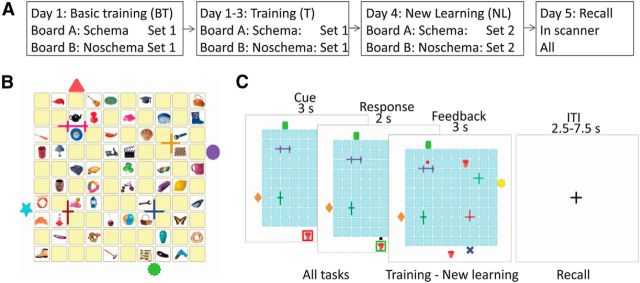Figure 1.
Experimental design. A, Experimental procedure. On day 1, subjects performed a basic training in which they had to learn associations between 50 objects and locations (Set 1) on each of the boards. On the same day, a more advanced training was performed in which subjects again learned associations between the same 50 objects and locations. This training was repeated on day 2 and 3. On day 4, 50 new object-location associations (Set 2) were introduced per board and 24 h later recall for all associations was tested in the MR scanner. The associations of Set 1 on the schema board remained consistent between sessions, whereas the association of Set 1 on the noschema board changed before the training and new learning sessions. B, Example of a board with one set of associations displayed and colored graphical forms outside and inside the board as landmarks. C, Timing of a trial of the (basic) training, new learning session, and recall session. The cue and response period were similar in all sessions. In the training and new learning sessions, feedback was presented on the screen immediately after response for the remaining trial duration (left), whereas during the recall session, the cursor turned gray after response for the remaining response period, followed by an intertrial interval (ITI; right).

